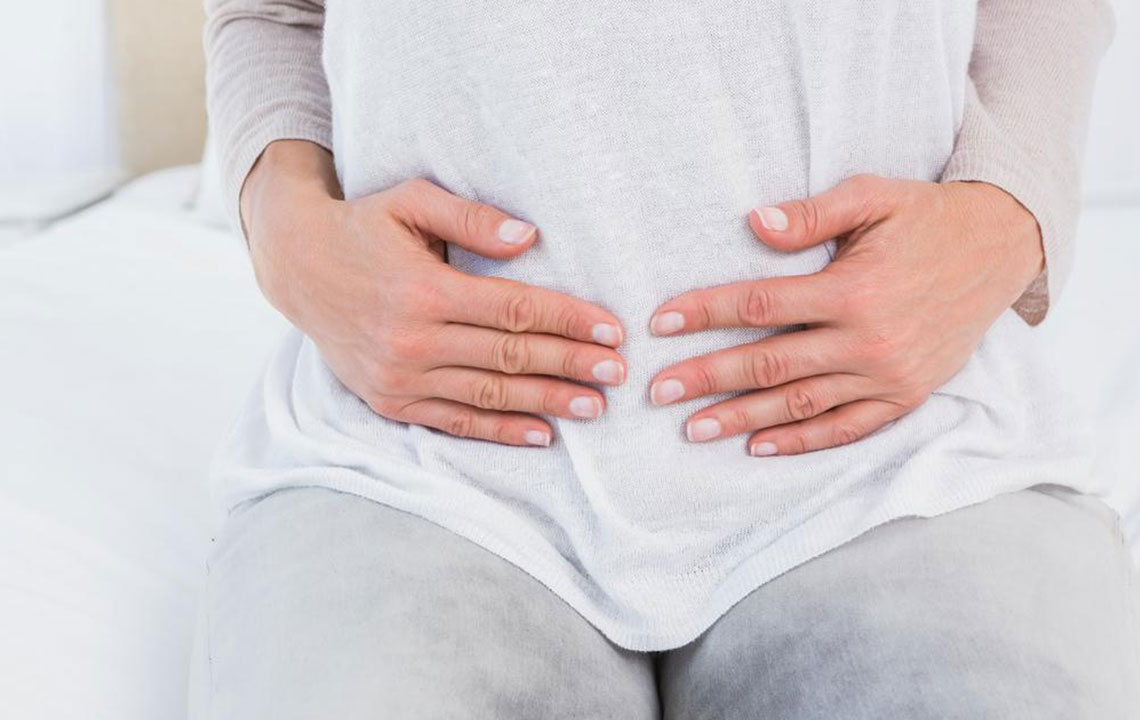Here’s What You Need to Know about Crohn’s Disease

Crohn’s disease, a type of inflammatory bowel disease (IBD), affects the gastrointestinal tract. The inflammation causes abdominal cramps (pain), fever, weight-loss, and diarrhea.
In the case of a severe inflammation, the stool is accompanied by blood and the infection spreads deep into the layers of the bowel tissue.
Besides the inner infection, other complications such as anemia, skin rashes, lethargy, eye inflammation, and arthritis may occur. The ailment debilitates you and can lead to grave complications if left untreated.
The colon, a part of the large intestine and the last part of the small intestine are the areas that are more prone to developing this disease.
Crohn’s symptoms and signs
Depending on the affected area of the bowel and the severity of the infection, you may develop symptoms that can prolong over weeks and years.
In its active state, Crohn’s symptoms and signs include:
- Diarrhea : Diarrhea is one of the first tell-tale signs. If you have inflammation in the small intestine, you experience a more, watery form of diarrhea. If the infection is rooted in the colon, then diarrhea carries blood with it. When the condition flares up, diarrhea can be severely afflicting. However, when the inflammation goes down, the condition gets better.
- Rectal bleeding : One of the major symptoms of this IBD is blood that might appear on or in the stool. The blood spots are typically bright red as the bleeding might be from the rectum or the large intestine. Sometimes if the inflammation is too severe you may experience only passing blood. If the bleeding seems to be acute and steady, you need to seek emergency medical attention.
- Fever/night sweats : People with Crohn’s disease develop a fever as a reactionary step, taken by the body to fight the inflammation flare up. Night sweats develop as the body temperature changes, indicating that the immune system has kicked into action and has actively engaged with the infection in the digestive tract
- Fatigue : With blood loss, there is a drop in red blood cell count that leads to anemia. This causes weakness and low energy levels in the body. The psychological stress of dealing with Crohn’s and the associated pain coupled with sleeping difficulties leaves you feeling depressed and fatigued.
- Abdominal cramps/tenderness : Tenderness and cramping of the stomach can occur, mostly associated with the onset of diarrhea. The inflammation of the gastrointestinal tract causes the related organs to dysfunction, as a result, the intestines kick into expunge action and causes abdominal pain.
- Loss of appetite : As food ingestion is linked with other symptoms like pain in the abdomen, feeling queasy and diarrheic, the act of eating turns into a strain. The perpetual feeling of being sick from eating makes you lose your appetite. Also, low energy levels render the body’s metabolic system to operate in a low-slung state, which adds to your appetite loss.
- Weight loss : Losing your appetite has a direct effect on your weight. Low absorption in the intestines leaves the body malnourished, which is why energy is taken from the pre-existing storage of protein in the body, as a result, you lose weight. Loss of protein due to diarrhea and vomit is also an added reason for weight loss.
- Forming of a fistula near the anus : Chronic inflammation can extend over to the anal area forming an abnormal connection between the intestine and the skin – a fistula. This could cause drainage of gut fillings into your skin which may get infected and form an abscess.
- Ulcers : The growth of ulcers throughout the gastrointestinal tract.
With the progression of the disease, Crohn’s symptoms and signs may become more severe causing inflammation of the joints, skin, and eyes, swelling of the liver or bile ducts, and even delayed sexual development (in children).
Most of these symptoms seem to be generic and can be mistaken for another disease. However, if you have a continuing change in your bowel habits or you have frequent diarrhea that is not responding to over-the-counter medicines, you must see your doctor.
Causes
Although the actual cause of Crohn’s disease is unknown, yet heredity and immune system disorder are considered to be the factors that influence its development.
The immune system becomes active when a virus or bacteria invades the body. While fighting off the germs, an abnormal malfunction may cause the immune system to attack cells in the digestive tract and trigger this disease. Also, it is more common to occur if the disease runs in your family.
Treatment
Research is still ongoing into finding a cure for Crohn’s disease. No single line of treatment is available yet. But, a combination of treatment options such as medication, nutrition therapy, and surgery, is employed by doctors to reduce the inflammation. This improves long-term prognosis by limiting the possible complications.
Get regular health checkups done and make sure to consult your healthcare provider in case any sign or symptom of Crohn’s appears. A healthy lifestyle with a balanced diet and proper fluid intake will keep your body fit to fight any infection. Prevention is always better than cure.


